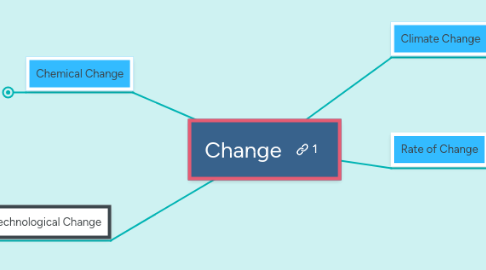
1. Chemical Change
1.1. In a chemical reaction, no matter can be created or destroyed.
1.1.1. Balancing chemical reactions is the perfect application of this concept
1.1.1.1. See Chemistry, Skills, Stoichiometry
1.2. The same goes for energy; no energy can be created or destroyed in a reaction.
1.2.1. Energy can be ‘lost’, but in reality it is expressed differently, such as in the form of a temperature change. Energy can be released or absorbed, but this is through energy transferring from one form to another.
2. Technological Change
2.1. Controlling the uncontrollable, or achieving the seemingly unachievable has driven human innovation for thousands and thousands of years.
2.1.1. Examples of these technological innovations are flight, instant world-wide communication, and sending man made objects out of the solar system.
2.1.2. Significance in in the context of technological change is an interesting concept:
2.1.2.1. Consider a technological innovation as an unprecedented accomplishment, its discovery or invention would be highly significant to millions of people whether directly or indirectly.
3. Climate Change
3.1. Carbon dioxide Emissions
3.1.1. Carbon foot print
3.1.1.1. Energy Equivilancies
3.1.1.1.1. One kilowatt hour of electricity used (1 kWh) is equivalent to the emission of 0.707 kg of carbon dioxide (EPA).
3.1.1.2. Energy usage and outdoor temperature:
3.1.1.2.1. More extreme temperature, whether hot or cold, require higher energy usage levels to retain a constant indoor temperature.
3.1.1.2.2. The tendency for temperature to change in a cyclical pattern means that it can be represented visually by sine or cosine functions (depending on your starting point).
3.1.2. Energy used in households is most likely the product of fossil fuel combustion. This produces carbon dioxide, that is then released into the atmosphere.
3.1.2.1. See: Chemistry, Subtopics, Chemical Reactions, Combustion Reactions.
4. Rate of Change
4.1. Derivatives
4.1.1. See: Math, Calculus, Derivatives

